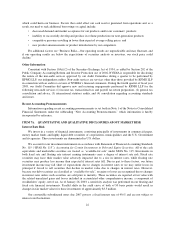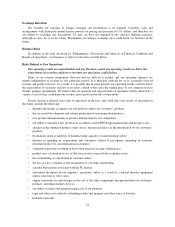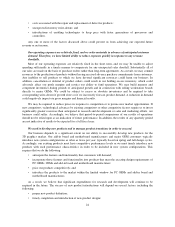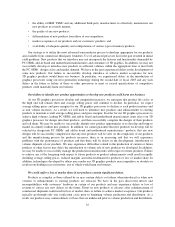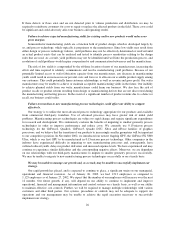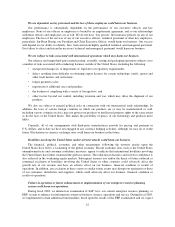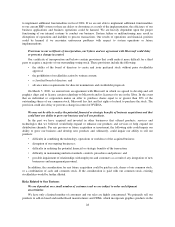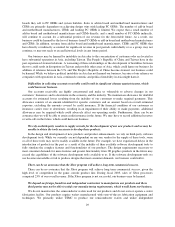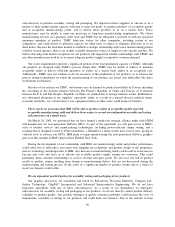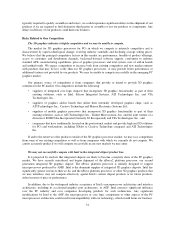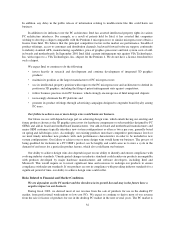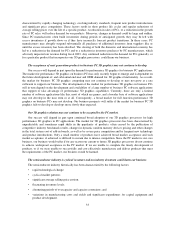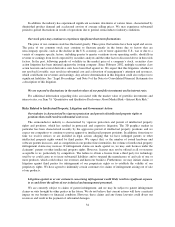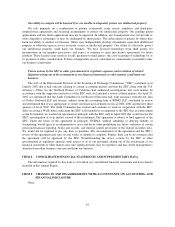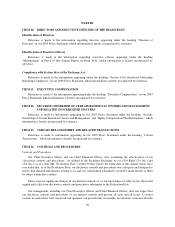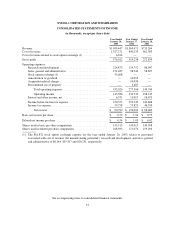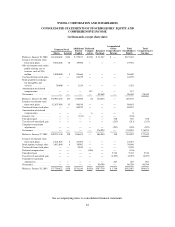NVIDIA 2003 Annual Report Download - page 34
Download and view the complete annual report
Please find page 34 of the 2003 NVIDIA annual report below. You can navigate through the pages in the report by either clicking on the pages listed below, or by using the keyword search tool below to find specific information within the annual report.In addition, any delay in the public release of information relating to modifications like this could harm our
business.
In addition to its influence over the PC architecture, Intel has asserted intellectual property rights in various
PC architecture interfaces. For example, as a result of patents held by Intel, it has asserted that companies
wishing to develop a chipset compatible with the Pentium 4 microprocessor or similar microprocessors obtain a
license from Intel. We believe that the principal competitive factors in the market are performance, breadth of
product offerings, access to customers and distribution channels, backward-forward software support, conformity
to industry standard APIs, manufacturing capabilities, price of graphics processors and total system costs of add-
in boards and motherboards. In September 2001 Intel filed a patent infringement suit against VIA Technologies,
Inc. with respect to a VIA Technologies, Inc. chipset for the Pentium 4. We do not have a license from Intel for
such a chipset.
We expect Intel to continue to do the following:
• invest heavily in research and development and continue development of integrated 3D graphics
products;
• maintain its position as the largest manufacturer of PC microprocessors;
• use its intellectual property position with respect to the PC microprocessor and architecture to defend its
position in 3D graphics, including the filing of patent infringement suits against competitors;
• follow business practices in its PC business, which strongly encourage use of Intel integrated chipsets;
• increasingly dominate the PC platform; and
• promote its product offerings through advertising campaigns designed to engender brand loyalty among
PC users.
Our failure to achieve one or more design wins would harm our business.
Our future success will depend in large part on achieving design wins, which entails having our existing and
future products chosen as the 3D graphics processors for hardware components or subassemblies designed by PC
OEMs and add-in board and motherboard manufacturers. Our add-in board and motherboard manufacturers and
major OEM customers typically introduce new system configurations as often as twice per year, generally based
on spring and fall design cycles. Accordingly, our existing products must have competitive performance levels or
we must timely introduce new products with such performance characteristics in order to be included in new
system configurations. Our failure to achieve one or more design wins would harm our business. The process of
being qualified for inclusion in a PC OEM’s product can be lengthy and could cause us to miss a cycle in the
demand of end users for a particular product feature, which also could harm our business.
Our ability to achieve design wins also depends in part on our ability to identify and ensure compliance with
evolving industry standards. Unanticipated changes in industry standards could render our products incompatible
with products developed by major hardware manufacturers and software developers, including Intel and
Microsoft. This would require us to invest significant time and resources to redesign our products to ensure
compliance with relevant standards. If our products are not in compliance with prevailing industry standards for a
significant period of time, our ability to achieve design wins could suffer.
Risks Related to Financial and Market Conditions
We are dependent on the PC market and the slowdown in its growth has and may in the future have a
negative impact on our business.
During fiscal 2003, we derived most of our revenue from the sale of products for use in the desktop PC
market, from professional workstations to low-cost PCs. We expect to continue to derive most of our revenue
from the sale or license of products for use in the desktop PC market in the next several years. The PC market is
32


